This Hidden Museum in Lucknow Is Reviving the City’s Forgotten Stories
In a forgotten stretch of Karimganj in Lucknow, beneath the open sky and beside her beloved mother, Begum Akhtar now rests… just as she wished. Her Mazaar, once neglected and forgotten, has been transformed into a place of grace: crimson and ivory walls, white pillars, and vines that whisper of memory. Here, history is not behind glass — it sings, breathes, and welcomes you in.
Note: A mazaar is a tomb or shrine built over the grave of a revered figure.
One of India’s most celebrated classical singers, Begum Akhtar — the Mallika-e-Ghazal (Queen of Ghazal)— gave the world music soaked in emotion, fragility, and fire. Yet, the space where she was laid to rest had long been forgotten — a crumbling site, slowly vanishing from public memory.
That changed when a group of people decided her legacy deserved better. Today, her mazaar stands restored. It doesn’t look like a museum piece. It feels lived in. Loved. It feels like someone remembered.
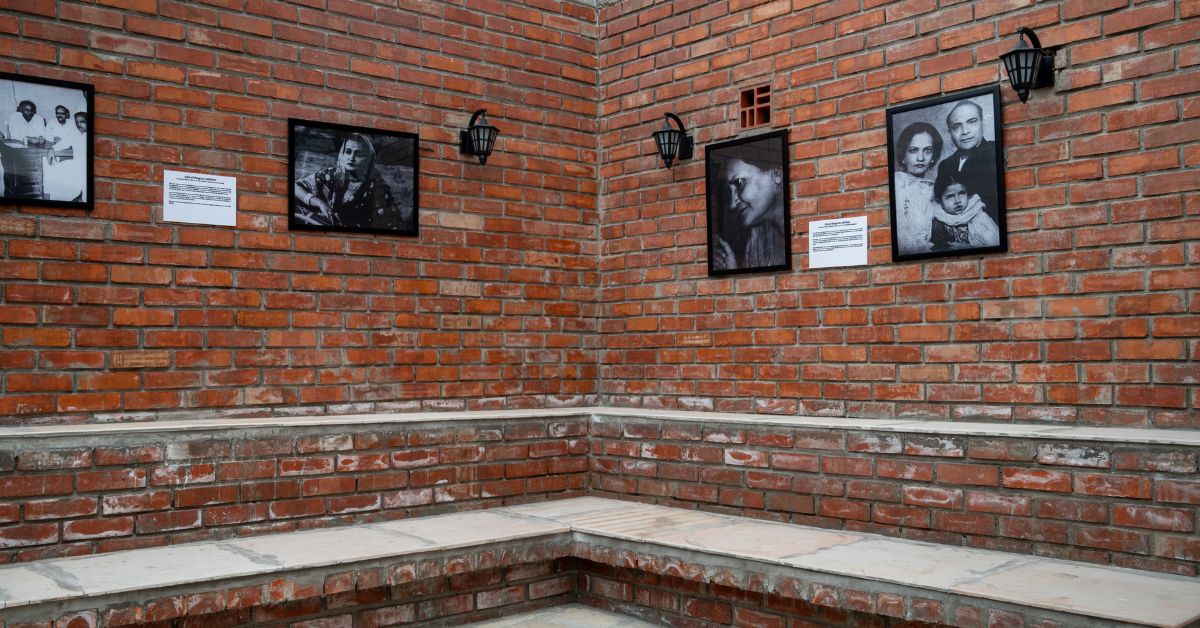 When history lives among people, a loving heart is needed to record these stories for the coming generations.
When history lives among people, a loving heart is needed to record these stories for the coming generations.
This isn’t just restoration — it’s resurrection. It’s what Lucknow Bioscope — part museum, part movement — is doing across the city. From lost landmarks to overlooked legends, it’s working to preserve what makes Lucknow Lucknow — not just in bricks and craft but in people, poetry, and memory.
As you walk through the giant red-coloured Lakhi Gate of Qaiserbagh in Lucknow to reach the intricate white building of the ‘Lucknow Bioscope’ museum, constructed in the 1950s, you feel a sudden detachment from the daily chaos. You step into the chapter of history books that was never read aloud, but makes Lucknow what it is today — a place of tangible and intangible experiences.
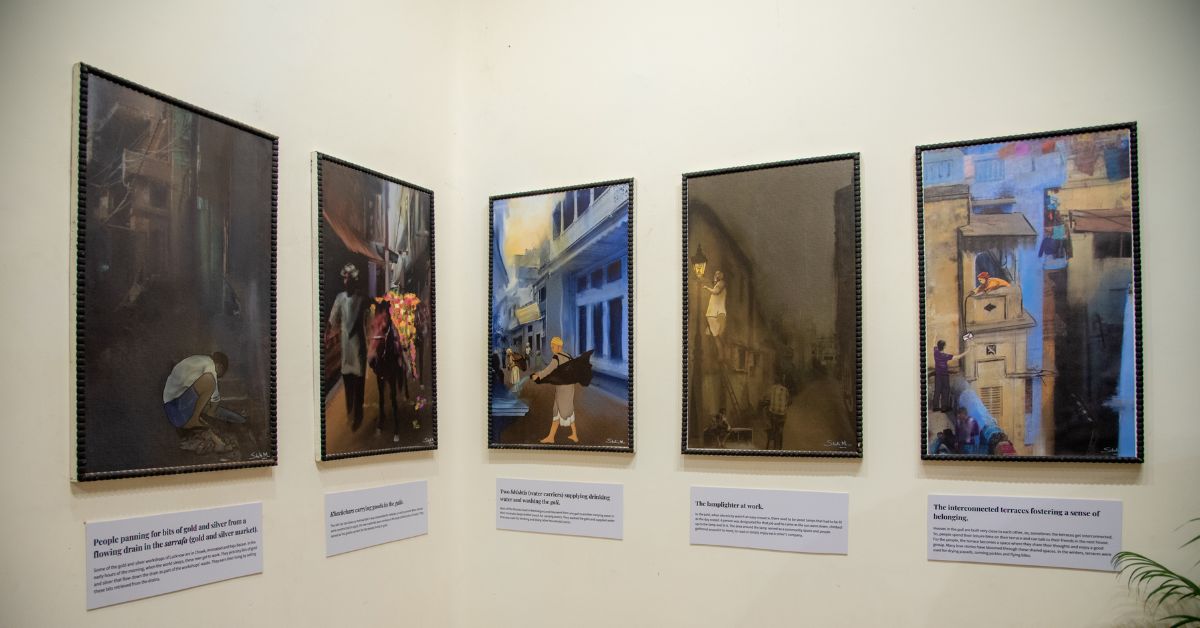 Lucknow Bioscope came to life — not as a traditional museum with roped-off exhibits, but as a living, shifting archive of the city’s heartbeat.
Lucknow Bioscope came to life — not as a traditional museum with roped-off exhibits, but as a living, shifting archive of the city’s heartbeat.
‘Lucknow Bioscope’ is more than just a museum. It is a lively space designed to celebrate what truly makes Lucknow special — its unique blend of cultures, seen through its history, music, literature, architecture, craft, and cuisine. Think of a weekend to soak yourself in the storied lanes or learn the centuries-old craft like Chikankari — Lucknow Bioscope is the answer.
‘The city’s soul is too big for just five days’
The idea of Lucknow Bioscope was born out of the Sanatkada Lucknow Festival, a five-day fiesta hosted by the Sanatkada Trust in late January or early February every year. Think of Zardozi? You’ll get more than that! From Chatapatti crafts for your ethnic wardrobe to Patili ke Kebab to satiate your palate, the festival is a celebration of Lucknow’s bygone and present-day charms.
“The festival’s been running since 2010 and has a new theme each year, focused on Lucknow’s history, shares Tasveer Hasan, the creative director of Lucknow Bioscope and Sanatkada Lucknow Festival. “Over the years, we kept stacking all our research in folders. But in 2019, we realised this work deserved more than just five days of display during the festival. The gallery went live last year in June 2024.
And just like that, Lucknow Bioscope came to life — not as a traditional museum with roped-off exhibits, but as a living, shifting archive of the city’s heartbeat. A place where you could feel the past, not through silence, but through conversations, crafts, and memories that still walk the lanes. A space where locals and tourists alike could explore the city’s spirit year-round.”
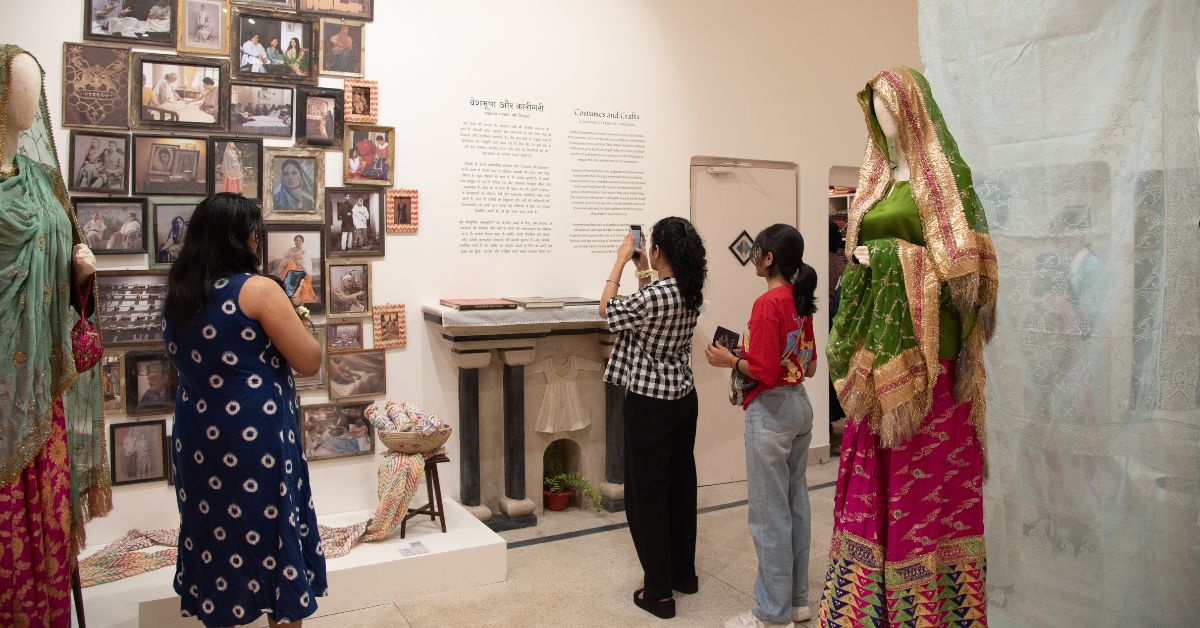 History often hides in plain sight, and preserving it is rarely easy—it is full of obstacles, forgotten stories, and slow rediscovery.
History often hides in plain sight, and preserving it is rarely easy—it is full of obstacles, forgotten stories, and slow rediscovery.
Preserving someone’s memory comes with a responsibility — to stay true to its essence. Lucknow Bioscope is not just about protecting the past but bringing it into the present. Whether it’s telling the stories of the city’s heritage through homes and people, or reviving spaces where important figures rest, they believe history isn’t something we just look at from afar — it’s something that continues to breathe with us every day.
How Lucknow Bioscope revived Begum Akhtar’s Mazaar
As you begin to understand their work, Lucknow Bioscope emerges as a cultural initiative—a heartfelt collective effort to restore, conserve, and carry forward the stories of Lucknow that have too often slipped through the cracks of time. One of its most moving projects is the restoration of the Mazaar of Begum Akhtar, the legendary Mallika-e-Ghazal.
“There is an open stage that was inaugurated on 30 October 2024 to mark her 50th Death Anniversary. The space is a sacred spot for classical music lovers who often pay their respects at the Mazaar. We call them Haziris!” says Tasveer.
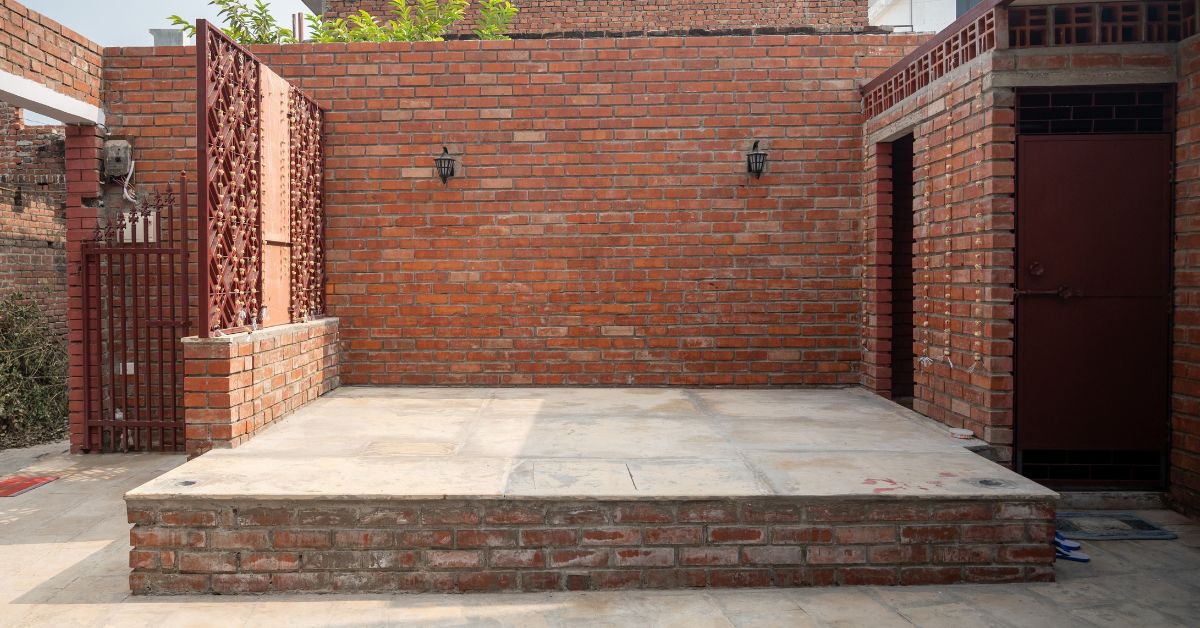 Lucknow is a city that thrives — not just in monuments or archives but also in the Lucknowis.
Lucknow is a city that thrives — not just in monuments or archives but also in the Lucknowis.
Every year on Begum Akhtar’s death anniversary, Lucknow Bioscope also hosts a public event where singers like Shruti Sadolkar Katkar, Shuba Mudgal, and Chandan Das – to name a few, have performed.
You might pass by a crumbling building without a second thought—faded walls, a rusted gate. But what if it once echoed with poetry, music, or quiet revolutions? History often hides in plain sight, and preserving it is rarely easy—it is full of obstacles, forgotten stories, and slow rediscovery.
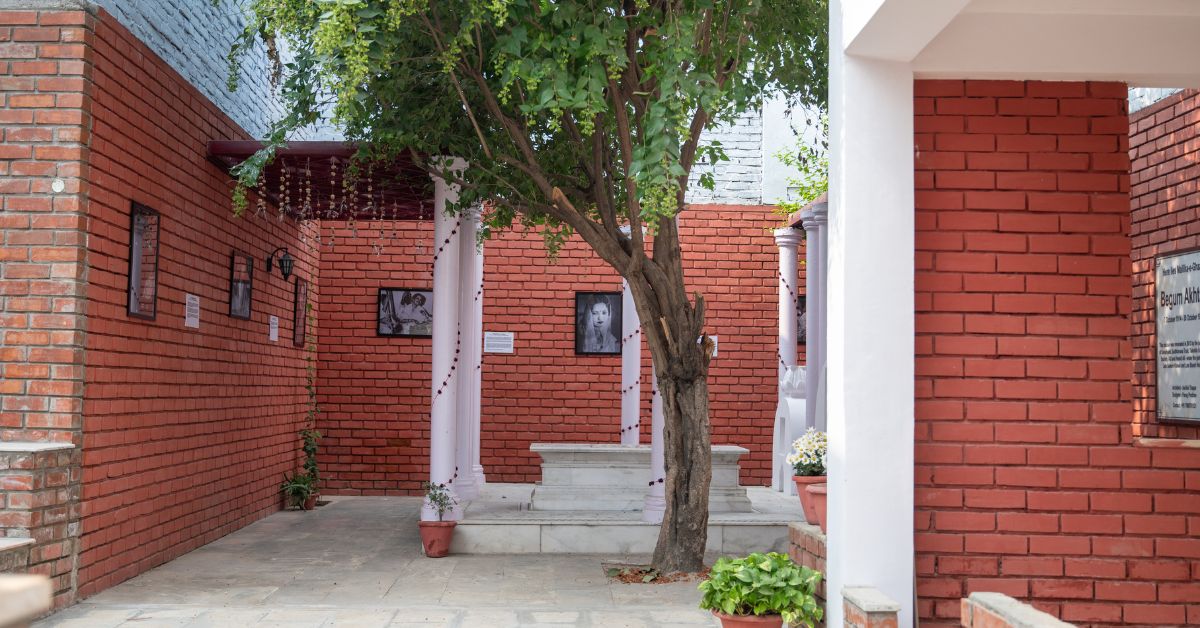 One of its most moving projects is the restoration of the Mazaar of Begum Akhtar, the legendary Mallika-e-Ghazal.
One of its most moving projects is the restoration of the Mazaar of Begum Akhtar, the legendary Mallika-e-Ghazal.
Madhavi Kuckreja, trustee of the Sanatkada Trust, recalls, “The Mazaar was renovated in 2012 by the joint efforts of Sanatkada, Sadbhavana Trust, Takshila Educational Society, Archaeological Survey of India and Hamid Ali — under the guidance of Late Saleem Kidwai and Late Shanti Hiranand who were admirers of Begum Akhtar. However, the sanctioned amount was too low for the project. Some additional donations helped cover the remaining cost. We are now aiming to build a listening room with Begum’s ghazal vinyl records and collecting donations for the same.”
She adds, “Locals, initially, were unaware of the site’s heritage and they objected to musical gatherings. But over time, with dialogue and mutual understanding of pausing the performances during Azaan (prayer) in the adjacent mosque, paved the way for an amicable blend.”
Lucknow Bioscope and Sanatkada Trust now oversee the maintenance of the Mazaar, with the goal of highlighting the contributions of women artists and artisans to the city’s cultural landscape.
Lucknow is a city that thrives — not just in monuments or archives but also in the Lucknowis – the people who have lived here through generations. The more you stay and let it settle, you will realise that there are stories to be told and crafts to be discovered, which are done by the people, for the people!
No middlemen, just makers: Where artisans meet their audience
Lucknow is known for Lakhnaviyat. But what we see today is a fusion of Indian, Persian, Afghani, Central Asian, British, and French influences that build the city’s unique multi-dimensional culture. It is often translated through the hands of local artisans who have gotten a platform to showcase their talent without any third-party mediations through Lucknow Bioscope, which also has a tiny museum store — Sanatkada Shop, showcasing the crafts, not only from the city but from across the country.
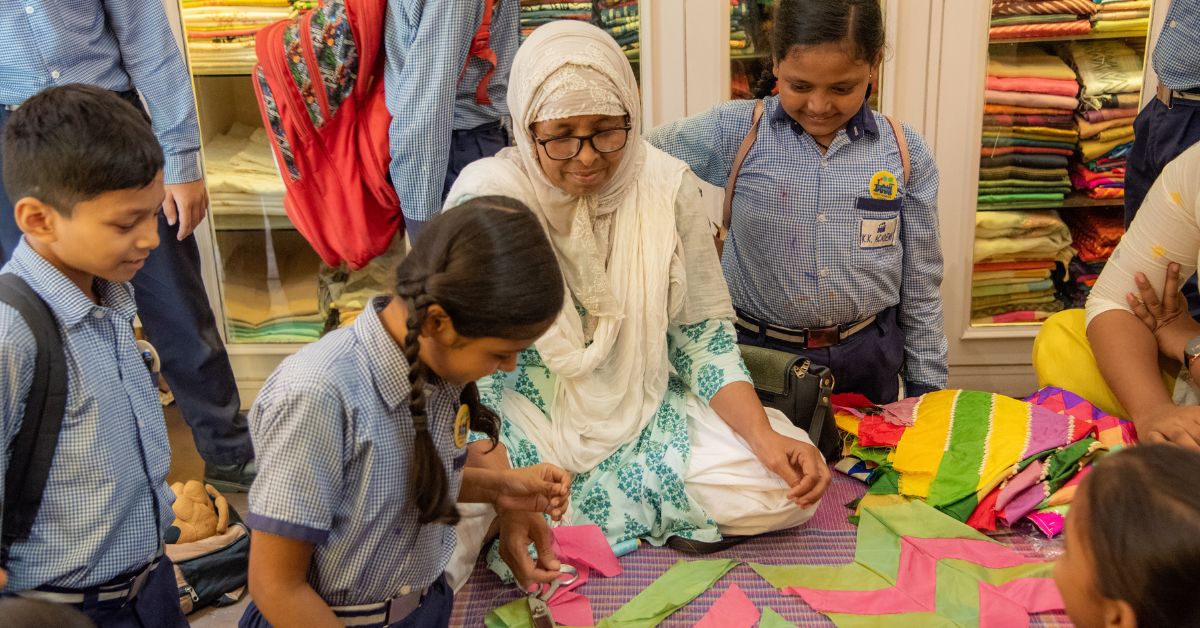 Asma Aapa, a local artisan of Chataptti craft, feels that her craft is valued at Lucknow Bioscope
Asma Aapa, a local artisan of Chataptti craft, feels that her craft is valued at Lucknow Bioscope
“I used to work at a regular boutique previously. The orders were placed in bulk, and I had to do all the work by myself. There was no recognition or appreciation for my work. Now, with Lucknow Bioscope, I not only get to showcase my craft but also interact with the customers directly who visit our Karkhana (workshop) or the Sanatkada Lucknow Festival,” shares Asma Aapa, who is a local artisan of Chataptti craft. Chatapatti or Tukri, is a distinctive craft native to Lucknowi homes, which involves stitching together small geometric silk pieces to form intricate patchwork designs.
The idea of empowering local artisans is noble, but it is no less daunting. Tasveer, though, clarifies, “Lucknow Bioscope’s work mostly depends on the funds raised through donations. Whatever these artisans make is more of a commercial setup that involves Sanatkada Trust. But we do interact with artisans from across the country. Out of 300 local artisans, we narrow it down to 100, whose crafts are given a platform at the festival and Sanatkada shop. We do not bargain as we know that their craft is invaluable.”
So now, if you come across your bag with a Tukri patch stitched on it or your saree is laden with Mukaish or Kamdani work and you want to trace the history of the craft, you know where to start!
 Lucknow is known for Lakhnaviyat — city’s unique multi-dimensional culture.
Lucknow is known for Lakhnaviyat — city’s unique multi-dimensional culture.
Lucknow is synonymous with stories that knock on your door in a gali that houses karigars (artisans) or when you are simply soaking in the past at Imambara. When history slips through the record and lives among people, not just a caring gaze but a loving heart is needed to record these qisse (stories) for the coming generations.
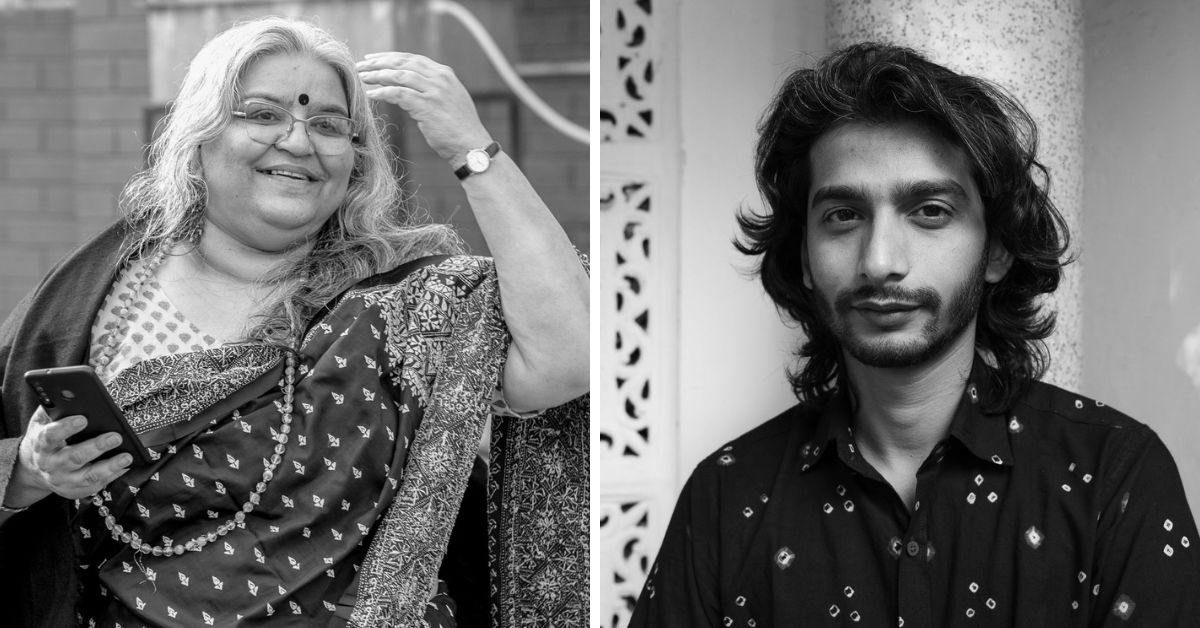 Madhavi Kuckreja, Trustee- Sanatkada Trust and Tasveer Hasan, Creative Director- Lucknow Bioscope & Sanatkada Lucknow Festival
Madhavi Kuckreja, Trustee- Sanatkada Trust and Tasveer Hasan, Creative Director- Lucknow Bioscope & Sanatkada Lucknow Festival
A space where the city’s past welcomes you like home
In Tasveer’s words, “We are trying to build a place that welcomes everyone who wishes to know Lucknow’s lesser-known history. Whether it is the festival from which this idea of Lucknow Bioscope was born or now, the museum itself, it is a place where people come together. It is an Adda (gathering spot) for those who love history and heritage. Through various walk tours, workshops, guest lectures and exhibitions, one can feel the warmth of this city embracing them.”
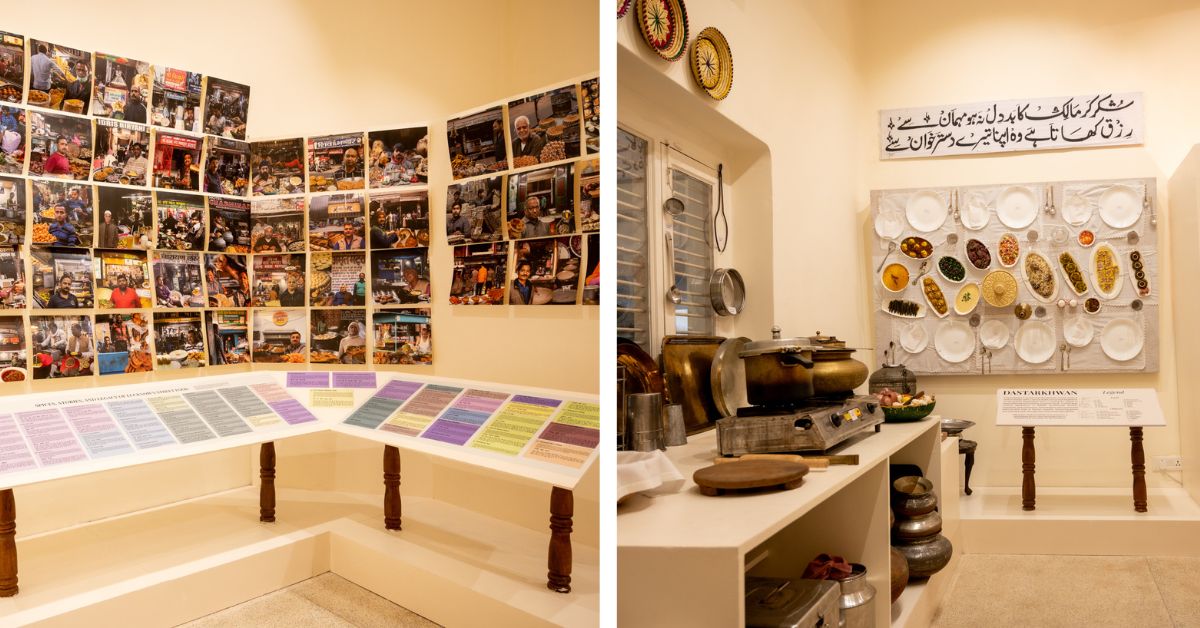 Lucknow Bioscope is an Adda (gathering spot) for those who love history and heritage.
Lucknow Bioscope is an Adda (gathering spot) for those who love history and heritage.
At Lucknow Bioscope, stories breathe and history takes physical forms. From forgotten melodies at Begum Akhtar’s Mazaar to the delicate stitches of Chatapatti, it truly brings out the spirit of ‘The City of Nawabs.’ So, whether you’re from the city or just passing through, it’s a space that makes you feel a part of something historical and mystical, yet at home!
Visit their website.
Visit Lucknow Bioscope at: 130 J.C Bose Road, Qaiser Bagh, Lucknow 226001
Edited by Leila Badyari; All pictures courtesy Lucknow Bioscope
News